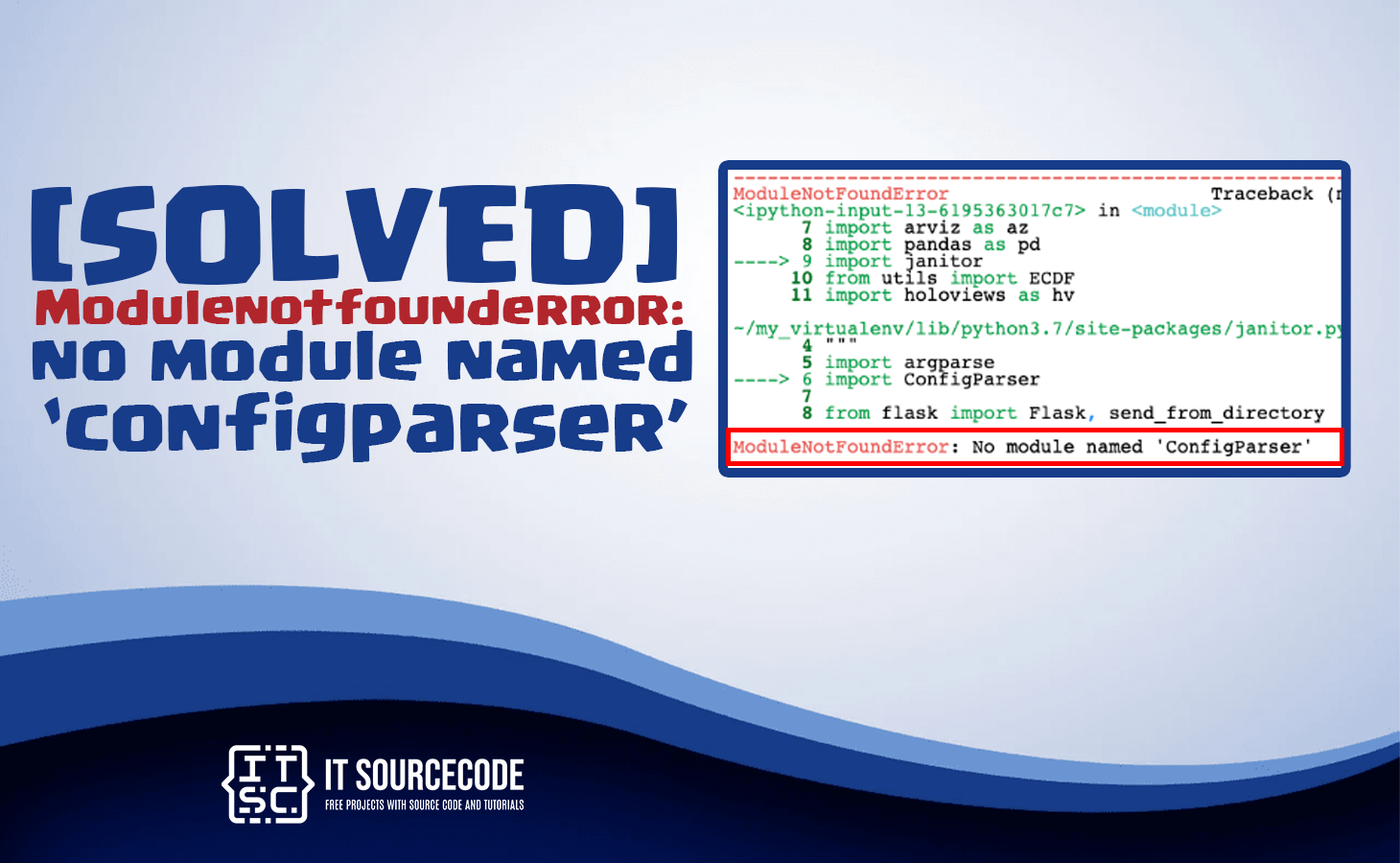In this tutorial, we will teach you the solutions to resolve the error no module named ‘configparser’.
Which are encountered in every python programmer?
Also, we will discuss if what are the reasons to cause of this error?
But before that, let’s define what is configparser in Python.
What is configparser in Python?
In Python, the configparser is a module that provides a way to use the configuration files.
Configuration files are typically used to store settings or parameters.
Which are needed for a program to run.
The configparser module provides a way to read and write configuration files in a standard format.
It can handle configuration files which is use different styles of syntax.
Including INI-style files and files with a similar syntax to Windows Registry files.
What are the usage of configparser in Python?
The usage of configparser in Python is that you can easily read and write configuration files in a Python program.
You can use it to parse a configuration file and extract the values of specific settings.
To create a new configuration file with default values for a program.
Here’s an example of how to use the configparser to read a configuration file:
import configparser
config = configparser.ConfigParser()
config.read('example.cfg')
# Access values in the configuration file
print(config.get('statement1', 'condition1'))
print(config.getint('statement2', 'condition2'))
In the example above, the ConfigParser object is made and then used to read a configuration file called example.cfg.
The get() method is used to access the value of the statement1 setting in the condition1 section of the configuration file.
The getint() method is used to access the value of the statement2 setting in the condition2 section of the configuration file.
Also read: Modulenotfounderror: no module named ‘openpyxl’ [SOLVED]
Why the no module named configparser error occur?
The no module named configparser error occurs because the MySQL-python package is haven’t supported by Python 3.
Also, the configparser module does not include in the standard library.
How to solved the no module named ‘configparser’?
Time needed: 3 minutes
These are the solutions to solve the no module named ‘configparser’ in a different operating system.
- Solution 1: Installation for configparser using pip package
In your project’s root directory, open the command prompt or terminal windows and install the module with the following command.
pip install mysqlclient
After you run the following command above, it will install mysqlclient in your python environment:
For Python3:
pip3 install mysqlclient
After you run the following command above, it will install mysqlclient in your python pip3 environment:
When thepipdoes not set up in your PATH environment variable, you need to try one of the python -m pip commands.
python -m pip install mysqlclient
After you run the following command above, it will install mysqlclient in your python environment:
For Python3 with the use of python command:
python3 -m pip install mysqlclient
For Py alias with the use of pip command:
py -m pip install mysqlclient
After you run the following command above, it will install mysqlclient in your python environment:
- Solution 2: Installation for configparser module in Linux
Here is the command to install the configparser module in MacOS:
sudo pip install mysqlclient
sudo pip3 install mysqlclient - Solution 3: Installation for configparser module in MacOS
If the error will continue, try to install the mysqlclient package with an operating system-specific command.
brew install mysql
then install
pip install mysqlclient
Installation for configparser module in Debian/Ubuntu
sudo apt-get install python3-dev default-libmysqlclient-dev build-essential
then install
pip install mysqlclient
Installation for configparser module for Red Hat/CentOS
sudo yum install python3-devel mysql-devel
then install
pip install mysqlclient - Solution 3: Installation for configparser module in Anaconda
Install the module configparser in anaconda with the following command:
conda install -c conda-forge mysqlclient
- Solution 4: Installation for configparser module in Jupyter Notebook
Install the module configparser in Jupyter Notebook with the following command:
!pip install mysqlclient
Conclusion
To conclude, we already provide the best solutions above to solve the error Modulenotfounderror: no module named ‘configparser’.







